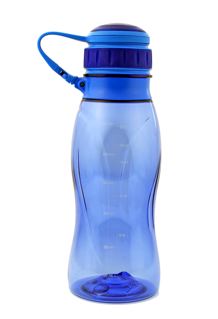 The approach to fueling US Olympic athletes has changed over the years, the past 7 or so years to be specific.
The approach to fueling US Olympic athletes has changed over the years, the past 7 or so years to be specific.
The US Olympic Committee (USOC) has sanctioned a “marrying” of the culinary arts with nutrition science to create a performance-based menu to help each athlete do their personal best in their sport.
Qualified Sports Dietitians(/Sports Nutritionists) work with food service staff to make sure that the needs of a wide range of athletes can be met.
(Symbol of the five Olympic Rings which is in the Public Domain in the United States shown for identification purposes only courtesy of Wikipedia Commons).
To do his or her best, involving various levels of endurance, grace, speed, and/or strength, each athlete needs to know about how health, fitness, and performance interact. Sports Dietitians(/Sports Nutritionists) have a unique opportunity to help educate each athlete when it comes to why the training facility is providing a combination of particular fluids and solids to get in the nutrients these athletes need.
The focus goes beyond maintaining energy stores in each athlete specific to perform in his or her sport. Meal and snack combos can vary depending upon how close an athlete is to a performance event as for those it is important to ease the strain of digestion so the athlete’s body can focus on the performance. Intake of fluids and solids needs to reduce fatigue, attenuate metabolic stress, speed up recovery, and help maintain ongoing muscle development.
At the U.S. Olympic Committee’s (USOC’s) main training facility at Colorado Springs, CO, endurance athletes, like other athletes, turn to one of the Sports Dietitians there to help them with nutrition timing that goes into detail of what to eat when for maximum impact on performance. (Often Sports Dietitians are available to athletes at other training facilities as well).
Along with the athletes natural genetic endowment, and sports-specific training and coaching, targeted nutritional intake can help the athlete to deliver the best performance he or she is capable of when it is their turn in the spotlight. Sports Dietitians have to understand the specific physiological demands of each position in each sport to help each athlete turn in a performance they hope will be enough to have their Olympic effort on the world stage positively remembered.
“High-octane fuel for performance at just the right time” is essential, per Bob Seebohar, MS, RD, CSSD, CSCS, quoted in a dietetic publication back in 2008 (then known as the ADA Times) when discussing what it took to prepare athletes for the games in Beijing, China. “It’s part art, part science” as he put it to do what he was doing at the time to help prepare those athletes for performance and recovery in endurance sports.
Fast forward to 2012 and it’s reported that Terri Moreman, USOC’s Associate Director of Food and Nutrition Services, is anticipating that in London for these 2012 Summer Olympic Games, the US Olympic Team will have access to many of the items they are already familiar with from the dining hall of the main USOC training facility at Colorado Springs, CO.
Dining Hall options have to provide offerings to meet the total energy and nutrient needs of everyone from the tiniest female gymnasts through the largest male swimmers (and yes, it is reported that ~8,000 calories could be the caloric needs of the largest male swimmers on a very demanding day depending upon a variety of circumstances).
That means the US Olympic Team dining hall offers various stations. These include: a deli; as well as a full salad bar; a recovery station with items like cottage cheese, fruits, shakes that might include liquid meal replacements, and yogurt; another station will feature organic-beef hamburgers; and others will offer “fusion” theme items. There’s even an Asian station that provides what is reported to be a favorite of many a US Olympic hopeful–a Thai Chicken Noodle Soup! (It seems the soup is a favorite after moderate intensity training days). In other instances, the Chefs at the Training Centers have come up with recipes that feature contributor products, such as Bruléed Banana Waffles listing Chobani yogurt as a main ingredient for a breakfast offering.
When athletes have rigorous training or competition coming up, they may go with easier to digest meals and swap out brown rice and replace it with easier to digest white rice so that their bodies can better focus on performance in say an afternoon training period. The closer athletes get to actual competition events, frequently the more liquid their meals become utilizing the same digestion principles. If athletes need to make a certain weight for a competition, then their intake will be tailored to help them do just that a number of days prior to the event date by using various strategies including the use of special protein-rich shakes that won’t sacrifice nutrition in the process. Think about when astronauts went up into space and how they had to be conditioned and their food had to be carefully planned out, well, for our Olympic athletes, Sports Dietitians use their food & nutrition skills and don’t leave any details to chance either.
A Sports Dietitian for acrobat and combat sports, Jennifer Gibson, MSc, RD, reportedly utilizes a “body weight code of conduct” to identify an athlete’s goal weight weeks prior to any competitive event so that the athlete and the Sports RD are in sync and reaching the goal weight is accomplished by the athlete in a healthful manner.
 Olympic athletes learn a number of tips/common key pointers that apply to each and every one of them, regardless of the sport(s) they excel in:
Olympic athletes learn a number of tips/common key pointers that apply to each and every one of them, regardless of the sport(s) they excel in:
- Always Make the Effort to Stay Hydrated and avoid Dehydration (Water bottle image courtesy of crisderaud at rgbstock.com) with use of cool water and judicious use of Sports Drinks, but not Energy Drinks (they know the importance of Rethink Your Drink!)
- Don’t Forget Iron-Rich Food Choices (and don’t forget other important nutrients, either) coming from real food
- Eat Carbohydrates (they really do fuel muscles and your brain!) Carbohydrate loading (which in some events can increase endurance by up to 20%) is specific for certain positions in certain sports and athletes learn how to properly do that realizing that building fuel stores is done over time and only “topped off” the night before an event (dietary intake is discussed in the International Olympic Committee Medical Commission (IOC) Consensus Statement on Sports Nutrition 2010). Also see: Rodriguez NR, Di Marco NM, Langley S, et al. Position of the American Dietetic Association, Dietitians of Canada, and the American College of Sports Medicine: Nutrition and athletic performance. J Am Diet Assoc. 2009;109(3):509-527.
- For Endurance Sports, Have a Repletion Plan for During as Well as After the Event (this could mean up to 30 to 60g of carbohydrates per hour to replenish glycogen stores as in after the event it is often 1 – 1.5 gm/kg)
- Never Skip Breakfast or Any Other Meal — Low-calorie dieting is counter-productive and could cost any athlete a lot in athletic performance
- Plan for How to Protect One’s Immune System (follow the Sports RD advice when it comes to reducing inflammation and utilizing antioxidant-rich choices in one’s diet to assuage damage caused by intense training)
- Plan for Recovery (within 5 minutes of completing any event, hydrate with water or an electrolyte-rich drink as warranted; within 15-20 minutes of completing any event it is time for more hydration; within 30 minutes of completing any higher intensity or higher endurance activity possibly that will involve a recovery drink mixture (carbohydrates and protein often works well and that’s where you’ll hear about some type of dairy or other milk as tolerated or shake/smoothie being consumed–created from desirable milk/yogurt and some frozen no sugar added or fresh berry choices to help one take in 3x more carbohydrates than protein); and within an hour of completing an event the body is ready for say a whole grain sandwich with possibly cheese, or egg, or lean meat or a salad filling). Sports Dietitians suggest avoiding processed carbohydrates, which increase inflammation, and opting instead for anti-inflammatory food items.
US athletes are fortunate to be able to turn to qualified Sports Dietitians for individualized guidance as they aim to do their best in any games. SCAN as well as the Academy of Nutrition and Dietetics can help any age athlete in the USA to obtain sports specific guidance–just contact them. Not all RD members of SCAN are going to have obtained a specialty credential such as a Board Certified Specialist in Sports Dietetics (CSSD) and not all CSSD credential holders will necessarily belong to SCAN (membership in specialty dietetic practice groups by RDs is voluntary), but we all share a similar appreciation for the importance of nutrition when it comes to fueling the body.
A well thought out, balanced nutritional intake, including adequate hydration, in combination with lots of targeted physical activity in practice under the eyes of experienced coaches, along with adequate rest and recovery, is how Olympic athletes can best reach for their dreams and possibly make their mark on Olympic history.

